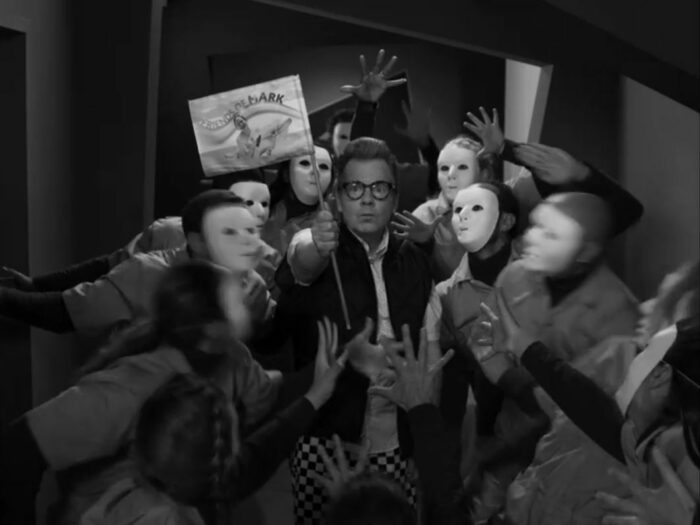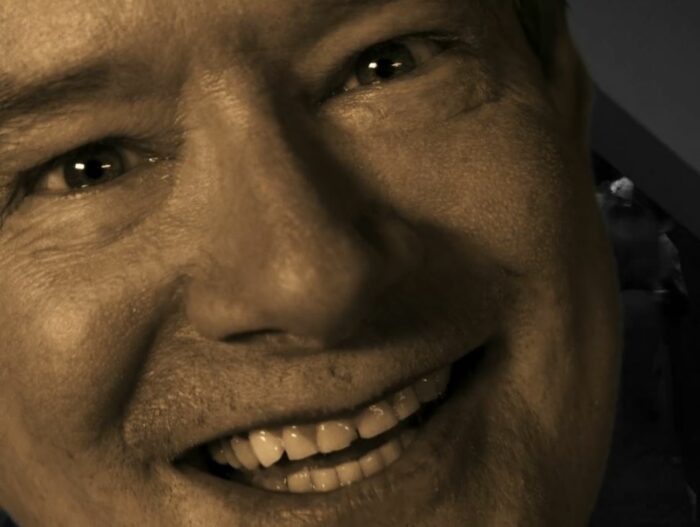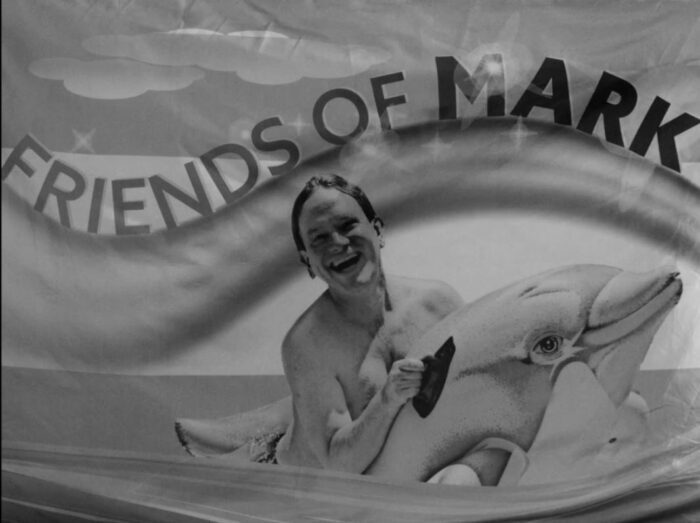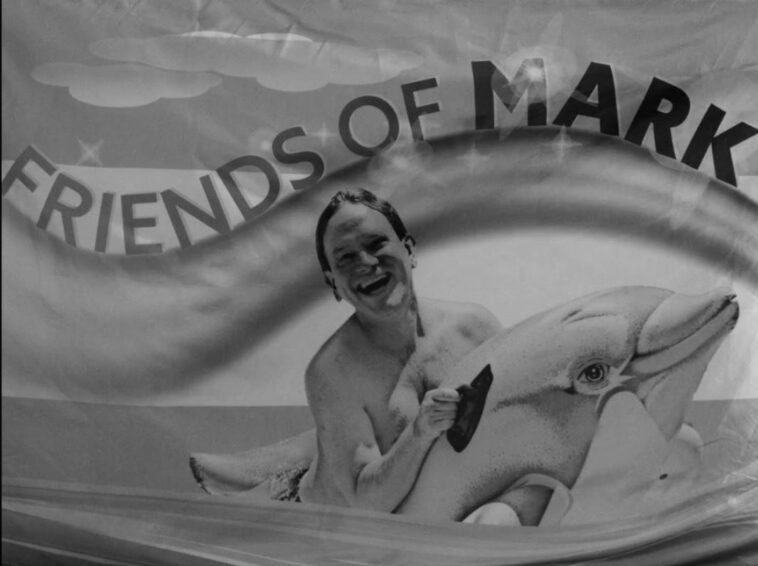Amazon was nice enough to give me early access to the first five episodes of the new season of Kids in the Hall, and while I enjoyed them immensely, my reflections ended up being rather general. I wasn’t going to run through every sketch, after all, but I also didn’t feel compelled to write much about any sketch in particular. (I did, for the record, consider some words on the recurring “Doomsday DJ” sketch in Episode 3, but ultimately felt like I’d be shoehorning them in, so I refrained from doing that.) Of course once the season was released I proceeded to Episode 6, and there was “Flags of Mark.”

I watched “Flags of Mark” a couple of times in a row immediately, before I proceeded to the rest of the episode. Its style is immediately striking, and daring for sketch comedy, as it plays more like an avant-garde short art film than a skit. Mark’s disembodied head floats over the screen, with his tone both sinister and charming. The faceless masses are rather literally faceless with their nondescript masks, and only the friends of Mark stand out as individuals—Kevin, Scott, David and Bruce.
It’s an exploration of narcissism, but carried to such an extreme as to take on a surreal air. The first time I watched it I laughed some. The second time I laughed constantly. Narcissist Mark truly does experience the well-being of others as tied up with their appreciation of him. Discussion of Mark is one of his favorite subjects, but we should also note how easy it is for one of the previously faceless crowd to become a friend of Mark, merely by expressing the desire to do so. And by the end of the sketch all of them are waving flags of Mark, sucked up into his egomania.
Mark says it’s sad when his friends are instead being pushed around by strangers at the beginning, unable to connect with one another in order to talk about Mark, but throughout he does not seem sad. He eats popcorn and sips a soda, narcissistically deriving enjoyment from how others suffer without him.

The true narcissist quite literally experiences himself as the center of the universe, or the nexus of meaningfulness, and this is both embodied in “Flags of Mark” as a whole and given a symbol in the titular flags. But the sketch further derives humor from how this can function. The friends of Mark really do enjoy being friends of Mark, and talking about Mark. He, as an exemplar of a benevolent and charismatic figure, provides them with meaning they would otherwise be lacking.
It perhaps doesn’t take much to suck people in this way and get them to build their own sense of self-identity around their identification with a “friend.” Of course, his is not friendship by any deep definition of the term, as this would require some kind of reciprocity of regard whereas with the friends of Mark that only flows in one direction. Though, I do suppose he cares about his friends insofar as they wave his flag.
“Flags of Mark” ends with a very quick “Based on a True Story” tag, which is perhaps the most hilarious part of the entire sketch. The action has been overblown in its artistry, evoking foreign films and the work of mimes. But it’s based on a true story.
Unfortunately, it is, and it’s a true story that happens all around us all of the time.

“Flags of Mark” is surreal, and I’d go so far as to call it a work of surrealism, in the classical sense defined by someone like Andre Breton. The surreal is not unreal; it’s more real than reality, if by that we merely mean the rational order of things that determines quotidian waking life. The surreal includes the dream and its logic, unconscious connections, free associations, and synchronicities. All of which are things that happen.
As such, “Flags of Mark” manages to hold its own as a short surrealist art film, while at the same time being absolutely hilarious. While virtually everything The Kids in the Hall do is funny, this sketch stands out as one with an indelible impact. I don’t think we’ll stop talking about “Flags of Mark” anytime soon.
Certainly some will hate it, if they’re not friends of Mark.


Enjoyed the “Flags of Mark” article! Alwasys have liked “Kids in the Hall” since their inception. Not only was the article entertaining, but very revealing of your eloquent style of writing and your knowledge of narcissism!
KUDOS man, Mr. Crain! (Seriously not being sarcastic.)
Sincerely, Miss Panda M. 💜🐼
Thanks!
What is the name of the dark haired comic actor cheating in “Flags of Mark” sketch who asks “Can I buy one?” referring to a flag? I can’t think of his name to save my life! Thanks!
https://m.imdb.com/name/nm1534707/filmotype/actor?ref_=m_nmfm_1
I need one!!!